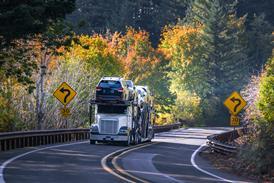 Disruption or continuous improvement? That is the question over what digitalisation, autonomy and electrification will do to automotive logistics. Will new players swipe away older ones as though deleting undesirables on an app, or will technology improve efficiency and customer reach?
Disruption or continuous improvement? That is the question over what digitalisation, autonomy and electrification will do to automotive logistics. Will new players swipe away older ones as though deleting undesirables on an app, or will technology improve efficiency and customer reach?
The stock market drives the bleaker outlook for some. With Tesla the fourth largest OEM by value – despite producing in a year what those valued at less produce in a week – investors are betting today’s hierarchy will crumble.
The example in industries like retail is telling, where firms are shuttering shops as consumers order more online. In June, after Amazon announced it was buying food chain Whole Foods, grocery stocks lost billions in value.
Automotive is rumbling, too. Ford’s Mark Fields lost his job to someone thought better placed for the new mobility era. Amazon is working on a platform to sell new cars, though details are few. Autonomous driving and on-demand cars may have a bigger impact than online sales (assuming people still buy cars). And while EVs make up a fraction of sales today, OEMs that fail to develop new models and batteries could fall behind consumers and regulations.
For logistics, there is much potential disruption, from autonomous equipment to new supply chain sources and materials. App-based systems or startups may automate core 3PL services, from customs clearance to carrier purchasing.
Our focus on digitalisation finds executives more embracing than fearful of change, however. At Volkswagen Group, Astrid Lühring reveals opportunities for tracking shipping notifications and automating spreadsheet-based processes. Meanwhile, OEMs are introducing more augmented reality and AGVs, but not without considering workers. For service parts, brands are responding to consumer expectations by increasing delivery service and digital ordering.
Logistics providers follow their clients by necessity, and more radical disruption could hit them, too. At the Automotive Logistics Europe conference, PwC’s Christoph Stürmer wondered how OEMs could be in a state of panic, facing “near extinction”, while providers “seem so cool”. He was partly joking, but it would be dangerous to assume technology only makes things better. To stay ahead of the market, logistics firms and executives will have to do more than update systems they probably should have renewed 10-15 years ago. But it’s a start, at least.























